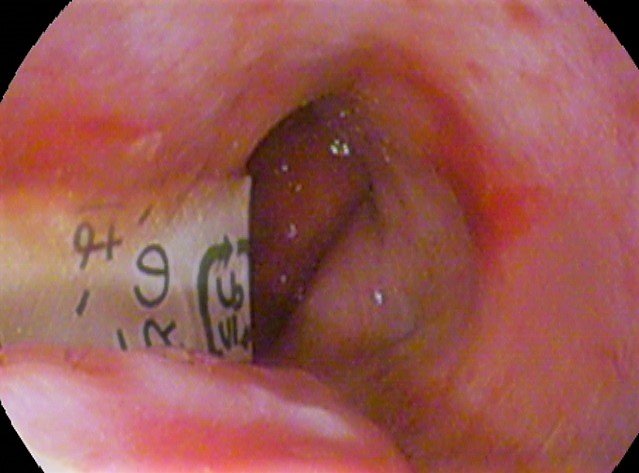|
Sensory-specific Satiety
Sensory specific satiety is a sensory hedonic phenomenon that refers to the declining satisfaction generated by the consumption of a certain type of food, and the consequent renewal in appetite resulting from the exposure to a new flavour or food.Raynor H, Epstein L. Dietary Variety, Energy Regulation, and Obesity. ''Psychological Bulletin'' 2001; 127: 325-341full text/ref> The phenomenon was first described in 1956 by the French physiologist Jacques Le Magnen. The term "sensory specific satiety" was coined in 1981 by Barbara J. Rolls and Edmund T. Rolls. The concept illustrates the role of physical stimuli in generating appetite and, more specifically, explains the significance of taste, or food flavour in relation to hunger. Besides conditioned satiety and alimentary alliesthesia, it is one of the three major phenomena of satiation. An Ingestive Classics paper on the topic has been written in conversation with Barbara J. Rolls (see https://www.ssib.org/web/classic24.php) Sensory ... [...More Info...] [...Related Items...] OR: [Wikipedia] [Google] [Baidu] |
Ingestion
Ingestion is the consumption of a substance by an organism. In animals, it normally is accomplished by taking in a substance through the mouth into the gastrointestinal tract, such as through eating or drinking. In single-celled organisms ingestion takes place by absorbing a substance through the cell membrane. Besides nutritional items, substances that may be ingested include medication (where ingestion is termed oral administration), recreational drugs, and substances considered inedible, such as foreign bodies or excrement. Ingestion is a common route taken by pathogenic organisms and poisons entering the body. Ingestion can also refer to a mechanism picking up something and making it enter an internal hollow of that mechanism, e.g. "''a grille was fitted to prevent the pump from ingesting driftwood''". Pathogens Some pathogens are transmitted via ingestion, including viruses, bacteria, and parasites. Most commonly, this takes place via the faecal-oral route. An interm ... [...More Info...] [...Related Items...] OR: [Wikipedia] [Google] [Baidu] |
Flavor (taste)
The gustatory system or sense of taste is the sensory system that is partially responsible for the perception of taste (flavor). Taste is the perception produced or stimulated when a substance in the mouth reacts chemically with taste receptor cells located on taste buds in the oral cavity, mostly on the tongue. Taste, along with olfaction and trigeminal nerve stimulation (registering texture, pain, and temperature), determines flavors of food and other substances. Humans have taste receptors on taste buds and other areas, including the upper surface of the tongue and the epiglottis. The gustatory cortex is responsible for the perception of taste. The tongue is covered with thousands of small bumps called papillae, which are visible to the naked eye. Within each papilla are hundreds of taste buds. The exception to this is the filiform papillae that do not contain taste buds. There are between 2000 and 5000Boron, W.F., E.L. Boulpaep. 2003. Medical Physiology. 1st ed. Elsevier ... [...More Info...] [...Related Items...] OR: [Wikipedia] [Google] [Baidu] |
Cognitive
Cognition refers to "the mental action or process of acquiring knowledge and understanding through thought, experience, and the senses". It encompasses all aspects of intellectual functions and processes such as: perception, attention, thought, intelligence, the formation of knowledge, memory and working memory, judgment and evaluation, reasoning and computation, problem solving and decision making, comprehension and production of language. Imagination is also a cognitive process, it is considered as such because it involves thinking about possibilities. Cognitive processes use existing knowledge and discover new knowledge. Cognitive processes are analyzed from different perspectives within different contexts, notably in the fields of linguistics, musicology, anesthesia, neuroscience, psychiatry, psychology, education, philosophy, anthropology, biology, systemics, logic, and computer science. These and other approaches to the analysis of cognition (such as embodied cogni ... [...More Info...] [...Related Items...] OR: [Wikipedia] [Google] [Baidu] |
Sensory Deprivation
Sensory deprivation or perceptual isolation is the deliberate reduction or removal of stimuli from one or more of the senses. Simple devices such as blindfolds or hoods and earmuffs can cut off sight and hearing, while more complex devices can also cut off the sense of smell, touch, taste, thermoception (heat-sense), and the ability to know which way is down. Sensory deprivation has been used in various alternative medicines and in psychological experiments (e.g. with an isolation tank). When deprived of sensation, the brain attempts to restore sensation in the form of hallucinations. Short-term sessions of sensory deprivation are described as relaxing and conducive to meditation; however, extended or forced sensory deprivation can result in extreme anxiety, hallucinations, bizarre thoughts, temporary senselessness, and depression A related phenomenon is perceptual deprivation, also called the Ganzfeld effect. In this case a constant uniform stimulus is used instead of a ... [...More Info...] [...Related Items...] OR: [Wikipedia] [Google] [Baidu] |
Obesity
Obesity is a medical condition, sometimes considered a disease, in which excess body fat has accumulated to such an extent that it may negatively affect health. People are classified as obese when their body mass index (BMI)—a person's weight divided by the square of the person's height—is over ; the range is defined as overweight. Some East Asian countries use lower values to calculate obesity. Obesity is a major cause of disability and is correlated with various diseases and conditions, particularly cardiovascular diseases, type 2 diabetes, obstructive sleep apnea, certain types of cancer, and osteoarthritis. Obesity has individual, socioeconomic, and environmental causes. Some known causes are diet, physical activity, automation, urbanization, genetic susceptibility, medications, mental disorders, economic policies, endocrine disorders, and exposure to endocrine-disrupting chemicals. While a majority of obese individuals at any given time are attempti ... [...More Info...] [...Related Items...] OR: [Wikipedia] [Google] [Baidu] |
Weight Loss
Weight loss, in the context of medicine, health, or physical fitness, refers to a reduction of the total body mass, by a mean loss of fluid, body fat (adipose tissue), or lean mass (namely bone mineral deposits, muscle, tendon, and other connective tissue). Weight loss can either occur unintentionally because of malnourishment or an underlying disease, or from a conscious effort to improve an actual or perceived overweight or obese state. "Unexplained" weight loss that is not caused by reduction in calorific intake or exercise is called cachexia and may be a symptom of a serious medical condition. Intentional Intentional weight loss is the loss of total body mass as a result of efforts to improve fitness and health, or to change appearance through slimming. Weight loss is the main treatment for obesity, and there is substantial evidence this can prevent progression from prediabetes to type 2 diabetes with a 7-10% weight loss and manage cardiometabolic health for di ... [...More Info...] [...Related Items...] OR: [Wikipedia] [Google] [Baidu] |
Food Intake
Eating (also known as consuming) is the ingestion of food, typically to provide a heterotrophic organism with energy and to allow for growth. Animals and other heterotrophs must eat in order to survive — carnivores eat other animals, herbivores eat plants, omnivores consume a mixture of both plant and animal matter, and detritivores eat detritus. Fungi digest organic matter outside their bodies as opposed to animals that digest their food inside their bodies. For humans, eating is an activity of daily living. Some individuals may limit their amount of nutritional intake. This may be a result of a lifestyle choice, due to hunger or famine, as part of a diet or as religious fasting. Eating practices among humans Many homes have a large kitchen area devoted to preparation of meals and food, and may have a dining room, dining hall, or another designated area for eating. Most societies also have restaurants, food courts, and food vendors so that people may eat when away ... [...More Info...] [...Related Items...] OR: [Wikipedia] [Google] [Baidu] |
Dieting
Dieting is the practice of eating food in a regulated way to decrease, maintain, or increase body weight, or to prevent and treat diseases such as diabetes and obesity. As weight loss depends on calorie intake, different kinds of calorie-reduced diets, such as those emphasising particular macronutrients ( low-fat, low-carbohydrate, etc.), have been shown to be no more effective than one another. As weight regain is common, diet success is best predicted by long-term adherence. Regardless, the outcome of a diet can vary widely depending on the individual. The first popular diet was "Banting", named after William Banting. In his 1863 pamphlet, ''Letter on Corpulence, Addressed to the Public'', he outlined the details of a particular low-carbohydrate, low-calorie diet that led to his own dramatic weight loss. Some guidelines recommend dieting to lose weight for people with weight-related health problems, but not for otherwise healthy people. One survey found that almost half of ... [...More Info...] [...Related Items...] OR: [Wikipedia] [Google] [Baidu] |
Palatability
Palatability (or palatableness) is the hedonic reward (i.e., pleasure) provided by foods or fluids that are agreeable to the " palate", which often varies relative to the homeostatic satisfaction of nutritional, water, or energy needs. The palatability of a food or fluid, unlike its flavor or taste, varies with the state of an individual: it is lower after consumption and higher when deprived. It has increasingly been appreciated that this can create a hunger that is independent of homeostatic needs.Lowe MR, Butryn ML. (2007). Hedonic hunger: a new dimension of appetite? Physiol Behav. Jul 24;91(4):432-9. Brain mechanism The palatability of a substance is determined by opioid receptor-related processes in the nucleus accumbens and ventral pallidum.Wassum KM, Ostlund SB, Maidment NT, Balleine BW. (2009). Distinct opioid circuits determine the palatability and the desirability of rewarding events. Proc Natl Acad Sci U S A. 106:12512–12517 The opioid processes involve ... [...More Info...] [...Related Items...] OR: [Wikipedia] [Google] [Baidu] |
Nutrient Density
Nutrient density identifies the amount of beneficial nutrients in a food product in proportion to e.g. energy content, weight or amount of perceived detrimental nutrients. Terms such as nutrient rich and micronutrient dense refer to similar properties. Several different national and international standards have been developed and are in use (see Nutritional rating systems). Definition and usage According to the World Health Organization, nutrient profiling classifies and/or ranks foods by their nutritional composition in order to promote human (and/or animal) health and to prevent disease. Ranking by nutrient density is one such nutrient profiling strategy. Ordering foods by nutrient density is a statistical method of comparing foods by the proportion of nutrients in foods. Some such comparisons can be the glycemic index and the overall nutritional quality index. When the density is defined in proportion to energy contents, nutrient-dense foods such as fruits and vegetables are ... [...More Info...] [...Related Items...] OR: [Wikipedia] [Google] [Baidu] |
Energy Density
In physics, energy density is the amount of energy stored in a given system or region of space per unit volume. It is sometimes confused with energy per unit mass which is properly called specific energy or . Often only the ''useful'' or extractable energy is measured, which is to say that inaccessible energy (such as rest mass energy) is ignored. In cosmological and other general relativistic contexts, however, the energy densities considered are those that correspond to the elements of the stress–energy tensor and therefore do include mass energy as well as energy densities associated with pressure. Energy per unit volume has the same physical units as pressure and in many situations is synonymous. For example, the energy density of a magnetic field may be expressed as and behaves like a physical pressure. Likewise, the energy required to compress a gas to a certain volume may be determined by multiplying the difference between the gas pressure and the external pressu ... [...More Info...] [...Related Items...] OR: [Wikipedia] [Google] [Baidu] |
Buffet
A buffet can be either a sideboard (a flat-topped piece of furniture with cupboards and drawers, used for storing crockery, glasses, and table linen) or a system of serving meals in which food is placed in a public area where the diners serve themselves. A form of '' service à la française'', buffets are offered at various places including hotels, restaurants, and many social events. Buffet restaurants normally offer all-you-can-eat food for a set price, but some measure prices by weight or by number of dishes. Buffets usually have some hot dishes, so the term cold buffet (see Smörgåsbord) has been developed to describe formats lacking hot food. Hot or cold buffets usually involve dishware and utensils, but a finger buffet is an array of foods that are designed to be small and easily consumed only by hand, such as cupcakes, slices of pizza, foods on cocktail sticks, etc. The essential feature of the various buffet formats is that the diners can directly view the food and ... [...More Info...] [...Related Items...] OR: [Wikipedia] [Google] [Baidu] |






